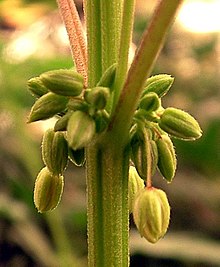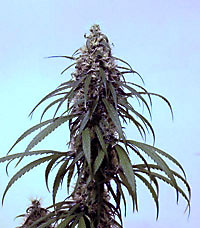| Revision as of 21:38, 23 January 2008 view sourcePundit (talk | contribs)Extended confirmed users, Rollbackers2,639 editsm Reverted 1 edit by Zenwhat; Respect the RfC: 2 to 0 to value the sources. Start another if you want to delete, but WAIT for the result.. (TW)← Previous edit | Revision as of 22:10, 23 January 2008 view source Zenwhat (talk | contribs)Rollbackers4,094 edits Revert 2. RFC is not arbitration. Consensus is global. RFC helps to build consensus, it doesn't define it.Next edit → | ||
| Line 80: | Line 80: | ||
| --> | --> | ||
| * '''Chocolate Thai'''<ref>{{cite journal | last=Hirsch | first=Robert | coauthors=''Edited by'' Judith Pynchon | title=Clinicians' self-assessment questions and answers in substance abuse treatment | publisher=Journal of Substance Abuse | volume=14 | issue=1 | pages=95-98 | year=1997 | doi=10.1016/S0740-5472(97)00050-0}}</ref> |
* '''Chocolate Thai'''<ref>{{cite journal | last=Hirsch | first=Robert | coauthors=''Edited by'' Judith Pynchon | title=Clinicians' self-assessment questions and answers in substance abuse treatment | publisher=Journal of Substance Abuse | volume=14 | issue=1 | pages=95-98 | year=1997 | doi=10.1016/S0740-5472(97)00050-0}}</ref> | ||
| * ''']''' | * ''']''' | ||
| * ''']''' | * ''']''' | ||
Revision as of 22:10, 23 January 2008
This article is about the plant genus Cannabis. For use as a psychoactive drug, see Cannabis (drug). For use as a therapeutic drug, see Medical cannabis. For non-drug cultivation and uses, see Hemp.
| Cannabis | |
|---|---|

| |
| common hemp | |
| Scientific classification | |
| Kingdom: | Plantae |
| Division: | Magnoliophyta |
| Class: | Magnoliopsida |
| Order: | Rosales |
| Family: | Cannabaceae |
| Genus: | Cannabis L. |
| Species | |
|
Cannabis sativa L. | |

Cannabis (Cán-na-bis) is a genus of flowering plants that includes three putative species, Cannabis sativa L., Cannabis indica Lam., and Cannabis ruderalis Janisch. These three taxa are indigenous to central Asia and surrounding regions. Cannabis has long been used for fibre (hemp), for medicinal purposes, and as a drug. Industrial hemp products are made from Cannabis plants selected to produce an abundance of fiber and minimal levels of THC (Δ- tetrahydrocannabinol), one psychoactive molecule that produces the "high" associated with marijuana. The drug consists of dried flowers and leaves of plants selected to produce high levels of THC. Various extracts including hashish and hash oil are also produced. The cultivation and possession of Cannabis for recreational use is outlawed in most countries.
Etymology
Main article: Cannabis (etymology)The plant name cannabis is from Greek κάνναβις (kánnabis), via Latin cannabis, originally a Scythian or Thracian word, also loaned into Persian as kanab. English hemp (Old English hænep) may be an early loan (predating Grimm's Law) from the same source. In Hebrew the word is קַנַּבּוֹס .
The further origin of the Scythian term is uncertain.
Description
Cannabis is an annual, dioecious, flowering herb. The leaves are palmately compound, with serrate leaflets. The first pair of leaves usually have a single leaflet, the number gradually increasing up to a maximum of about thirteen leaflets per leaf (usually seven or nine), depending on variety and growing conditions. At the top of a flowering plant, this number again diminishes to a single leaflet per leaf. The lower leaf pairs usually occur in an opposite leaf arrangement and the upper leaf pairs in an alternate arrangement on the main stem of a mature plant.
Cannabis usually has imperfect flowers with staminate "male" and pistillate "female" flowers occurring on separate plants, although hermaphroditic plants sometimes occur. Male flowers are borne on loose panicles, and female flowers are borne on racemes. It is not unusual for individual plants to bear both male and female flowers, though these are referred to as 'intersexual' or hermaphroditic rather than monoecious, since staminate and pistillate structures appear at different points on the plant, not within the same flower.
Cannabinoids, terpenoids, and other compounds are secreted by glandular trichomes that occur most abundantly on the floral calyxes and bracts of female plants.
All known strains of Cannabis are wind-pollinated and produce "seeds" that are technically called achenes. Most strains of Cannabis are short day plants, with the possible exception of C. sativa subsp. sativa var. spontanea (= C. ruderalis), which is commonly described as "auto-flowering" and may be day-neutral.
Cannabis is naturally diploid, having a chromosome complement of 2n=20, although polyploid individuals have been artificially produced. Cannabis is a genus of flowering plant which includes one or more species. The plant is believed to have originated in the mountainous regions just north west of the Himalayas. It is also known as hemp, although this term usually refers to varieties of Cannabis cultivated for non-drug use. Cannabis plants produce a group of chemicals called cannabinoids which produce mental and physical effects when consumed. As a drug it usually comes in the form of dried buds or flowers (marijuana), resin (hashish), or various extracts collectively known as hashish oil. In the early 20th century, it became illegal in most of the world to cultivate or possess Cannabis for drug purposes.
Reproduction
Breeding systems


Cannabis is predominantly dioecious, although many monoecious varieties have been described. Subdioecy (the occurrence of monoecious individuals and dioecious individuals within the same population) is widespread. Many populations have been described as sexually labile.
As a result of intensive selection in cultivation, Cannabis exhibits many sexual phenotypes that can be described in terms of the ratio of female to male flowers occurring in the individual, or typical in the cultivar. Dioecious varieties are preferred for drug production, where the female plants are preferred. Dioecious varieties are also preferred for textile fiber production, whereas monoecious varieties are preferred for pulp and paper production. It has been suggested that the presence of monoecy can be used to differentiate between licit crops of monoecious hemp and illicit dioecious drug crops.
Mechanisms of sex determination
Cannabis has been described as having one of the most complicated mechanisms of sex determination among the dioecious plants. Many models have been proposed to explain sex determination in Cannabis.
Based on studies of sex reversal in hemp, it was first reported by K. Hirata in 1924 that an XY sex-determination system is present. At the time, the XY system was the only known system of sex determination. The X:A system was first described in Drosophila spp in 1925. Soon thereafter, Schaffner disputed Hirata's interpretation, and published results from his own studies of sex reversal in hemp, concluding that an X:A system was in use and that furthermore sex was strongly influenced by environmental conditions.
Since then, many different types of sex determination systems have been discovered, particularly in plants. Dioecy is relatively uncommon in the plant kingdom, and a very low percentage of dioecious plant species have been determined to use the XY system. In most cases where the XY system is found it is believed to have evolved recently and independently.
Since the 1920s, a number of sex determination models have been proposed for Cannabis. Ainsworth describes sex determination in the genus as using "an X/autosome dosage type".

The question of whether heteromorphic sex chromosomes are indeed present is most conveniently answered if such chromosomes were clearly visible in a karyotype. Cannabis was one of the first plant species to be karyotyped; however, this was in a period when karyotype preparation was primitive by modern standards (see History of Cytogenetics). Heteromorphic sex chromosomes were reported to occur in staminate individuals of dioecious "Kentucky" hemp, but were not found in pistillate individuals of the same variety. Dioecious "Kentucky" hemp was assumed to use an XY mechanism. Heterosomes were not observed in analyzed individuals of monoecious "Kentucky" hemp, nor in an unidentified German cultivar. These varieties were assumed to have sex chromosome composition XX. According to other researchers, no modern karyotype of Cannabis had been published as of 1996. Proponents of the XY system state that Y chromosome is slightly larger than the X, but difficult to differentiate cytologically.
More recently, Sakamoto and various co-authors have used RAPD to isolate several genetic marker sequences that they name Male-Associated DNA in Cannabis (MADC), and which they interpret as indirect evidence of a male chromosome. Several other research groups have reported identification of male-associated markers using RAPD and AFLP. Ainsworth commented on these findings, stating,
It is not surprising that male-associated markers are relatively abundant. In dioecious plants where sex chromosomes have not been identified, markers for maleness indicate either the presence of sex chromosomes which have not been distinguished by cytological methods or that the marker is tightly linked to a gene involved in sex determination.
Environmental sex determination is known to occur in a variety of species. Many researchers have suggested that sex in Cannabis is determined or strongly influenced by environmental factors. Ainsworth reviews that treatment with auxin and ethylene have feminizing effects, and that treatment with cytokinins and gibberellins have masculinizing effects. It has been reported that sex can be reversed in Cannabis using chemical treatment. A PCR-based method for the detection of female-associated DNA polymorphisms by genotyping has been developed.
Various strains of cannabis
Because in most countries the cultivation of cannabis is illegal, the alleged existence of various strains is difficult to verify. Many alleged strains, such as purple haze, are very predominant in pop-culture (see right), but the actual existence of many of these strains is uncertain and the slang terms used to refer to these strains do not appear to be used by botanists. Some strains, such as G-13, are acknowledged to be urban legends.
Alleged strains of cannabis:
- Acapulco gold
- BC Bud
- Chocolate Thai
- Panama Red
- G-13
- Kush
- Northern Lights
- Purple Haze
- White Widow
Aspects of Cannabis production and use
- Medical Cannabis discusses its use as a medication.
- Cannabis (drug) discusses its use as a recreational drug.
- Spiritual use of cannabis discusses sacramental and religious use.
- Hemp discusses its uses as a source of housing, oil, food, fibers, and industrial materials.
- Cannabis (drug) cultivation discusses aspects of cultivation for medicinal and recreational drug purposes
- Legality of cannabis focuses on the law and enforcement aspects of growing, transporting, selling and using cannabis as a drug.
- Health issues and the effects of cannabis discusses the pharmacology, physical, and mental effects of Cannabis when used as drug.
Gallery of images
- Cannabis plants Cannabis plants
- Cannabis plants Cannabis plants
- Cannabis plants Cannabis plants
- Cannabis plants Cannabis plants
References
- ^ Erowid. 2006. Cannabis Basics. Retrieved on 25 Feb 2007
- Lebel-Hardenack, S. and S. R. Grant. 1997. Genetics of sex determination in flowering plants. Trends in Plant Science 2(4): 130–136.
- Cristiana Moliterni, V. M., L. Cattivelli, P. Ranalli. and G. Mandolino. 2005. The sexual differentiation of Cannabis sativa L.: A morphological and molecular study. Euphytica 140(1-2): 95-106. Retrieved on 25 Feb 2007
- Bouquet, R. J. 1950. Cannabis. United Nations Office on Drugs and Crime. Retrieved on 23 Feb 2007
- Mahlberg, Paul G. and Eun Soo Kim. 2001. THC (tetrahyrdocannabinol) accumulation in glands of Cannabis (Cannabaceae). The Hemp Report 3(17). Retrieved on 23 Feb 2007
- ^ Clarke, Robert C. 1991. Marijuana Botany, 2nd ed. Ron Publishing, California. ISBN 0-914171-78-X
- Small, E. 1975. Morphological variation of achenes of Cannabis. Canadian Journal of Botany 53(10): 978-987.
- Small, E. 1972. Interfertility and chromosomal uniformity in Cannabis. Canadian Journal of Botany 50(9): 1947-1949.
- ^ Ainsworth, C. 2000. Boys and girls come out to play: the molecular biology of dioecious plants. Annals of Botany 86(2): 211-221. Retrieved on 24 Feb 2007
- de Meijer, E. P. M. 1999. Cannabis germplasm resources. In: Ranalli P. (ed.). Advances in Hemp Research, Haworth Press, Binghamton, NY, pp. 131-151. ISBN 1-56022-872-5
- ^ Cite error: The named reference
mignoni1999was invoked but never defined (see the help page). - Schumann, E., A. Peil, and W. E. Weber. 1999. Preliminary results of a German field trial with different hemp (Cannabis sativa L.) accessions. Genetic Resources and Crop Evolution 46(4): 399-407. Retrieved on 24 Feb 2007
- Ranalli, P. 2004. Current status and future scenarios of hemp breeding. Euphytica 140(1): 121-131.
- ^ Hirata, K. 1924. Sex reversal in hemp. Journal of the Society of Agriculture and Forestry 16: 145-168.
- ^ Schaffner, J. H. 1931. The fluctuation curve of sex reversal in staminate hemp plants induced by photoperiodicity. American Journal of Botany 18(6): 424-430.
- ^ Mandolino, Giuseppe and Paolo Ranalli. 2002. The applications of molecular markers in genetics and breeding of hemp. Journal of Industrial Hemp 7(1): 7-23. Retrieved on 23 Feb 2007
- ^ Truta, E., E. Gille, E. Toth, and M. Maniu. 2002. Biochemical differences in Cannabis sativa L. depending on sexual phenotype. Journal of Applied Genetics 43(4): 451-462. Retrieved on 24 Feb 2007
- Bridges, C. B. 1925. Sex in relation to chromosomes and genes. American Naturalist 59: 127-137.
- Schaffner, J. H. 1929. Heredity and sex. Ohio Journal of Science 29(1): 289-300.
- Negrutiu, I., B. Vyskot, N. Barbacar, S. Georgiev, and F. Moneger. 2001. Dioecious plants; a key to the early events of sex chromosome evolution. Plant Physiology 127(4): 418-424.
- Menzel, Margaret Y. 1964. Meiotic chromosomes of monoecious Kentucky hemp (Cannabis sativa). Bulletin of the Torrey Botanical Club 91(3): 193-205.
- Shao Hong and Robert C. Clarke. 1996. Taxonomic studies of Cannabis in China. Journal of the International Hemp Association 3(2): 55-60. Retrieved on 25 Feb 2007
- Peil, A., H. Flachowsky, E. Schumann, and W. E. Weber. 2003. Sex-linked AFLP markers indicate a pseudoautosomal region in hemp (Cannabis sativa L.). Theoretical and Applied Genetics 107(1): 102-109.
- Sakamoto, K., K. Shimomura, Y. Komeda, H. Kamada, and S. Satoh. 1995. A male-associated DNA sequence in a dioecious plant, Cannabis sativa L. Plant & Cell Physiology 36(8): 1549-1554. Retrieved on 25 Feb 2007
- Sakamoto, K., T. Abe, T. Matsuyama, S. Yoshida, N. Ohmido, K. Fukui, and S. Satoh. 2005. RAPD markers encoding retrotransposable elements are linked to the male sex in Cannabis sativa L. Genome 48(5): 931-936. Retrieved on 25 Feb 2007
- Törjék, O., N. Bucherna, E. Kiss, H. Homoki, Z. Finta-Korpelová, I. Bócsa, I. Nagy, and L. E. Heszky. 2002. Novel male specific molecular markers (MADC5, MADC6) for sex identification in hemp. Euphytica 127: 209-218.
- Meijer, Etienne P. M. de, M. Bagatta, A. Carboni, P. Crucitti, V. M. Cristiana Moliterni, P. Ranalli, and G. Mandolino. 2003. The Inheritance of Chemical Phenotype in Cannabis sativa L. Genetics 163(1): 335-346. Retrieved on 23 Feb 2007
- Tanurdzic, M. and J. A. Banks. 2004. Sex-determining mechanisms in land plants. Plant Cell 16 (suppl.): S61-71.
- Mohan Ram, H. Y., and R. Sett. 1982. Induction of fertile male flowers in genetically female Cannabis sativa plants by silver nitrate and silver thiosulfate anionic complex. Theoretical and Applied Genetics 62: 369-375.
- Journal of Industrial Hemp 2003 Vol 8 issue 1 page 5-9, Female-Associated DNA Polymorphisms of Hemp (Cannabis sativa L.), Hong Shao, Shu-Juan Song, Robert C. Clarke
- Doorenbos, Norman J., Patricia S. Fetterman, Maynard W. Quimby, and Carlton Turner. 1971. Cultivation, extraction, and analysis of Cannabis sativa L. Annals New York Academy of Sciences 191: 3-14.
- Hirsch, Robert (1997). "Clinicians' self-assessment questions and answers in substance abuse treatment". 14 (1). Journal of Substance Abuse: 95–98. doi:10.1016/S0740-5472(97)00050-0.
{{cite journal}}: Cite journal requires|journal=(help); Unknown parameter|coauthors=ignored (|author=suggested) (help)
See also
| Ancient anaesthesia | |
|---|---|
| Plants / animals |
|
| Preparations | |
| Compounds | |
| People | |
| Culinary herbs and spices | |
|---|---|
| Herbs |
|
| Spices |
|
| Blends |
|
| Lists |
|
| Related topics | |
| Cannabis | |||||||||
|---|---|---|---|---|---|---|---|---|---|
| General | |||||||||
| Usage |
| ||||||||
| Variants | |||||||||
| Effects |
| ||||||||
| Culture | |||||||||
| Organizations |
| ||||||||
| Demographics | |||||||||
| Politics |
| ||||||||
| Related | |||||||||
Further reading
- Cannabis: A History (2005) Martin Booth ISBN 0-312-32220-8
- UNODC: World Drug Report 2006, Chapter 2: Cannabis: Why We Should Care (2006)
- EMCDDA drugs profile: Cannabis (2007)
External links
- International Plant Names Index (IPNI)
- The Endocannabinoid System Network (ECSN) - Contains medical information to the Endocannabinoid System